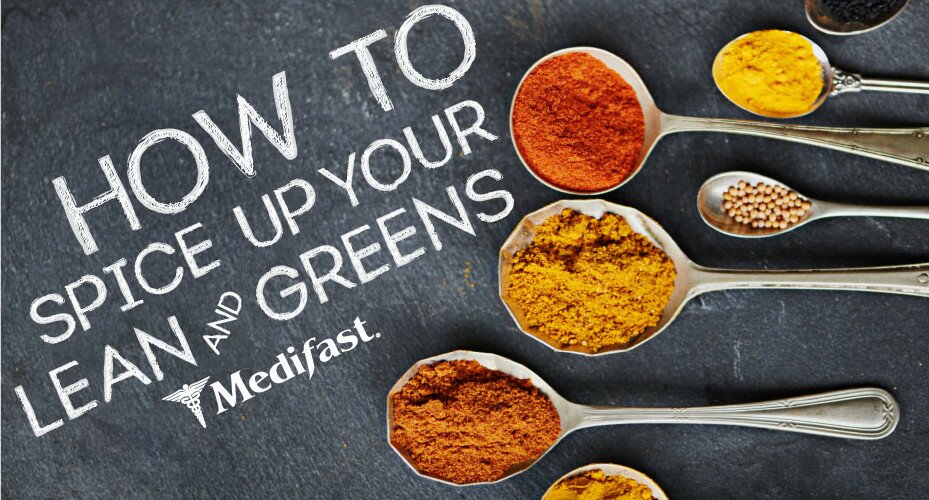
Cooking with Herbs & Spices
Herbs and spices can transform a bland dish into something bold, zesty, sweet, savory, spicy—you name it! Whether it’s supporting your digestive system, providing antioxidant benefit, or promoting cardiovascular health, herbs and spices offer nutritional benefit while reducing the need for salt and other less healthful seasonings. So don’t be shy; infuse your lean and green meal with herbs and spices that impart sweet aromas, bold flavors, and good nutrition.
How Much To Add
The amount to add varies with each type of spice or herb, type of recipe, and personal preference. If you’re creating your own recipe, start by adding only one or two herbs or spices. If you don’t know how much to add, look at tested recipes to get an idea of how much to use or begin with ¼ teaspoon of dried or 1 tablespoon of fresh herbs and spices. Taste if possible, and adjust seasonings as needed.
When to Add Herbs & Spices
The type of herb or spice and the type of food dictates when the herb or spice should be added. As a general rule of thumb add fresh herbs near the end of the cooking time since prolonged heating can cause the flavor and aroma to become dull. For uncooked foods, such as raw meat, add spices and herbs several hours in advance to allow the flavors to marinate. Add ground spices to food about 15 minutes, and whole spices at least one hour, before the end of the cooking time.
Other Tips
- Fresh versus Dried Conversion: If you’re recipe calls for fresh herbs and you want to use dried or vice versa, here is a guideline to follow: 1 tablespoon finely cut fresh herbs = 1 teaspoon dried leafy herbs or ¼ to ½ teaspoon ground dried herbs
- Herbs and ground spices keep for about one year. Whole spices can last up to two years.
- Grow your own herbs, and freeze extras.
- Purchase small amounts of herbs and spices you don’t use often. See if there is a local grocery store or farm market stand that allows you to purchase only what you need.
- To save money, look for herbs and spices in the international aisle of your grocery store.
Flavor Combinations for lean and green meals
Beef: basil, bay leaf, chili powder, cilantro, curry powder, garlic, marjoram, mustard, oregano, parsley, pepper, rosemary, sage, savory, tarragon, thyme
Cheese: basil, caraway, celery seed, chervil, chili powder, chives, coriander, cumin, dill, garlic, horseradish, lemon zest, marjoram, mint, mustard, nutmeg, paprika, parsley, pepper, sage, tarragon, thyme
Chicken: allspice, basil, cinnamon, curry powder, dill, fennel, garlic, ginger, lemongrass, mustard, paprika, rosemary, saffron, sage, savory, tarragon, thyme
Eggs: basil, chervil, chili powder, curry powder, chives, dill, fennel, ginger, lemon zest, marjoram, paprika, rosemary, saffron, sage, tarragon, thyme
Fish: anise, basil, bay leaf, cayenne, celery seed, chives, curry powder, dill, fennel, garlic, ginger, lemon zest, marjoram, mustard, oregano, parsley, rosemary, saffron, sage, tarragon, thyme
Salads: basil, caraway, chives, dill, garlic, lemon zest, lovage, marjoram, mint, oregano, parsley, rosemary, tarragon, thyme
Soups: basil, bay leaf, chervil, chili powder, cumin, dill, fennel, garlic, marjoram, parsley, rosemary, sage, savory, thyme
Vegetables: basil, celery seed, cinnamon, chili powder, cloves, cumin, curry powder, dill, fennel, garlic, ginger, gumbo file, lemongrass, marjoram, nutmeg, onion powder, oregano, parsley, paprika, rosemary, savory, tarragon, thyme
